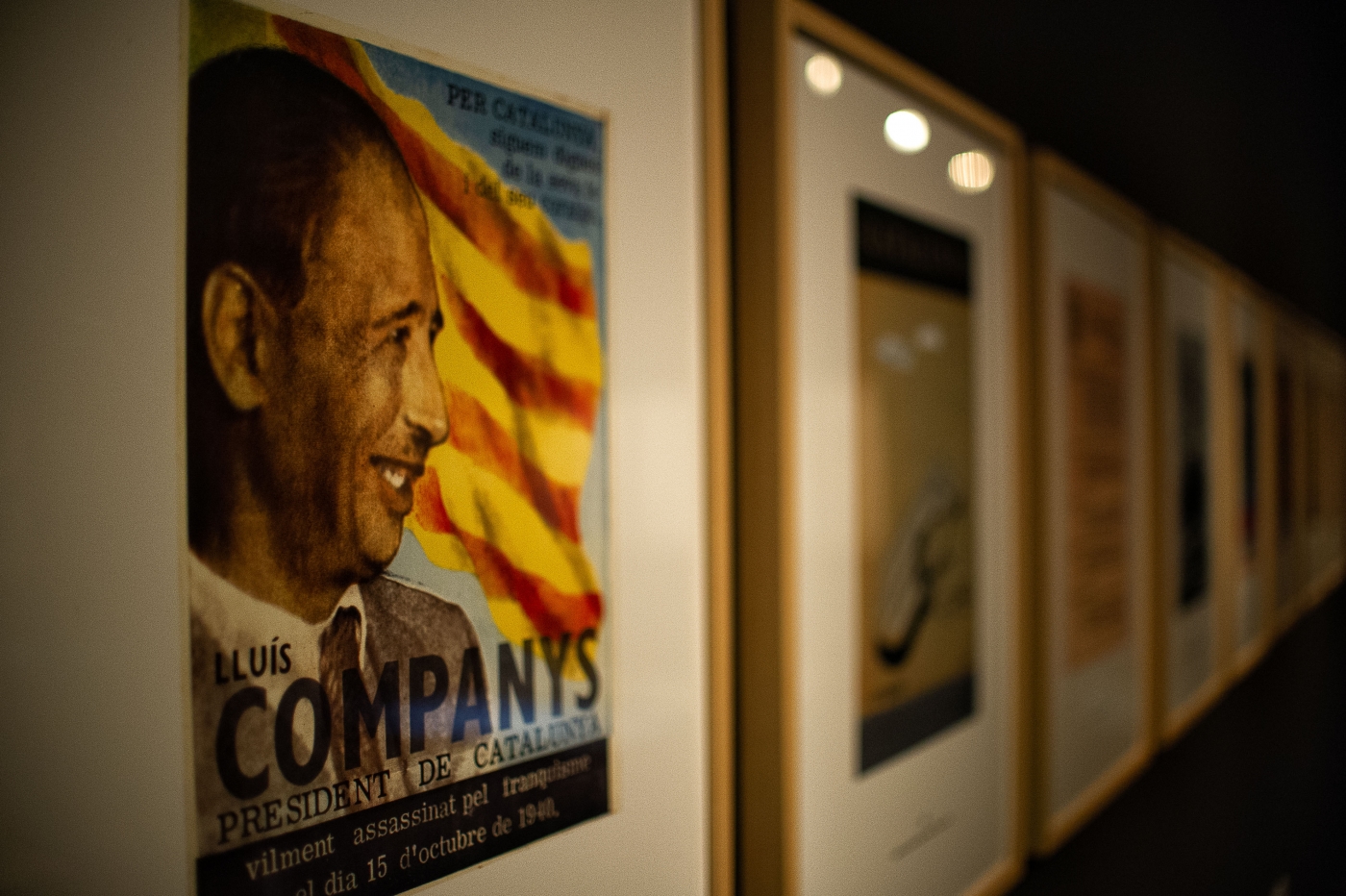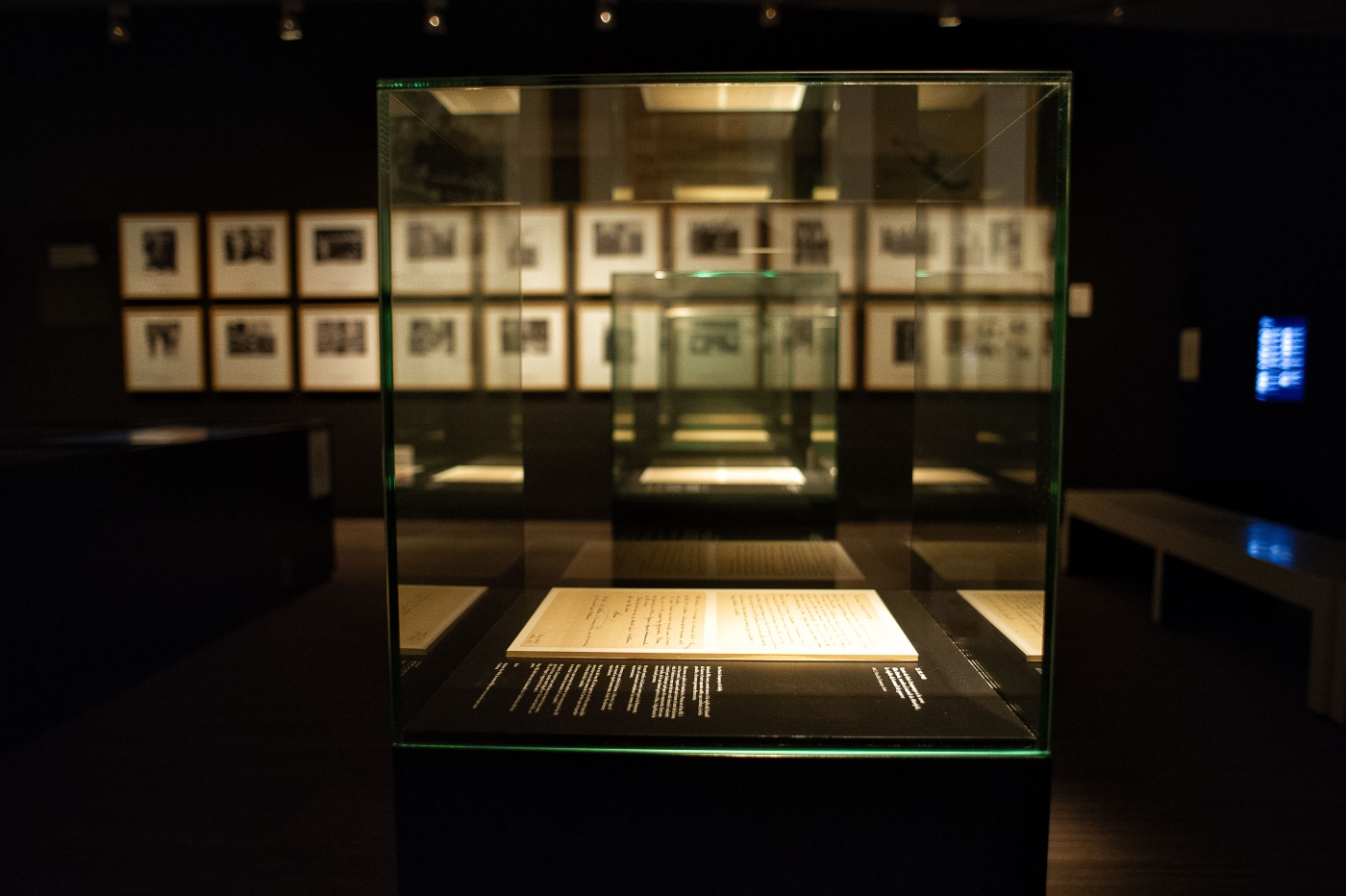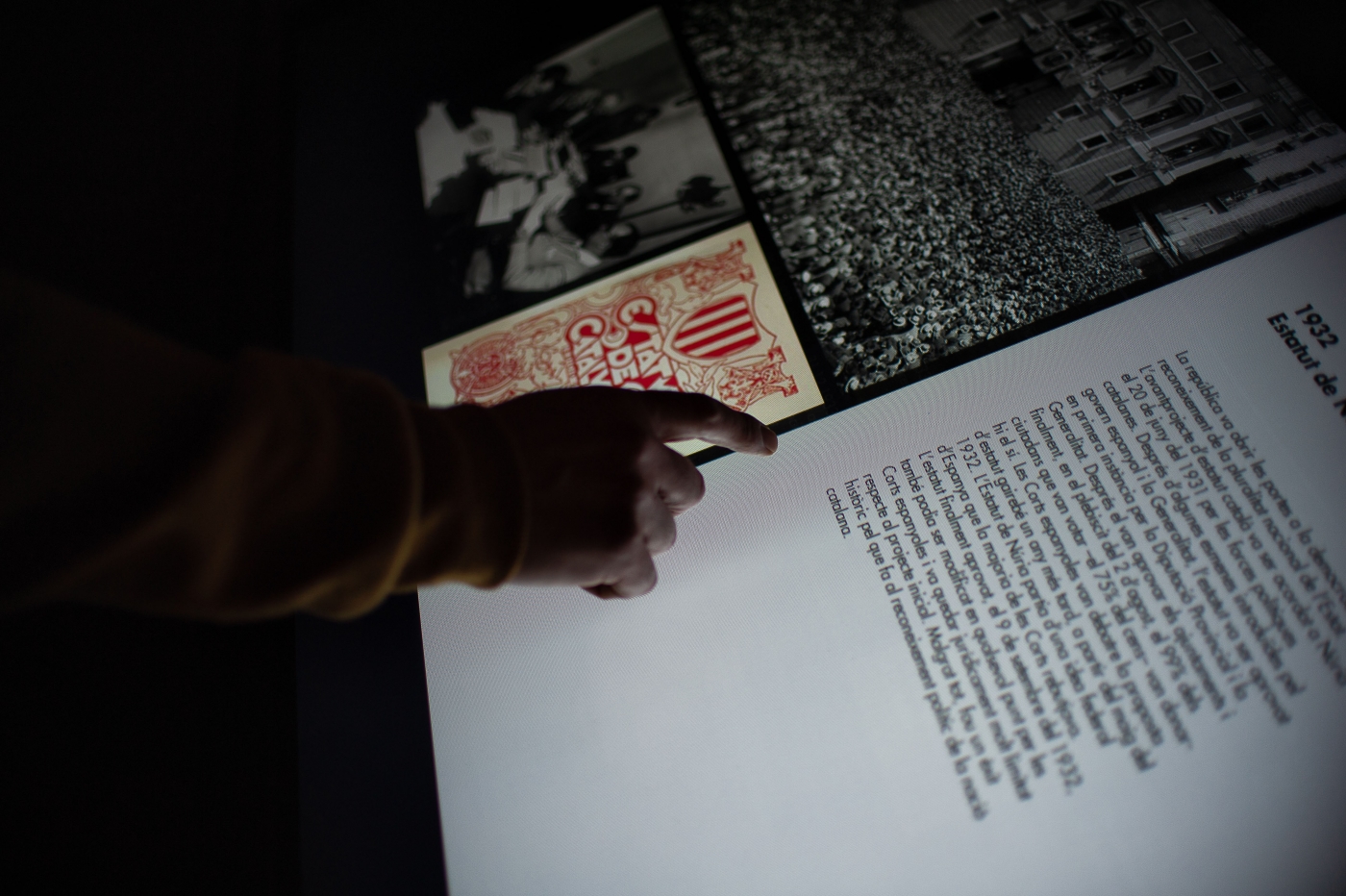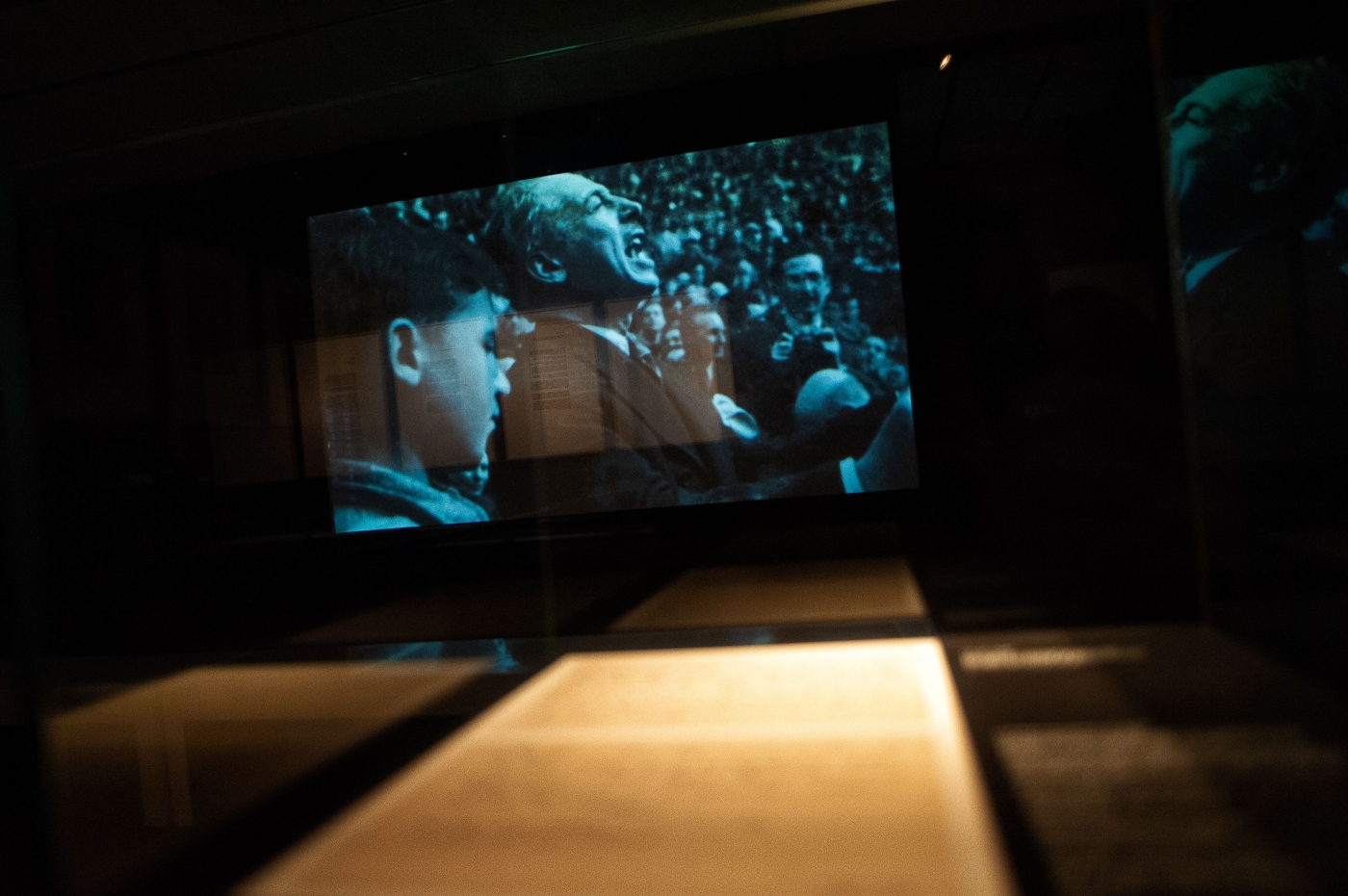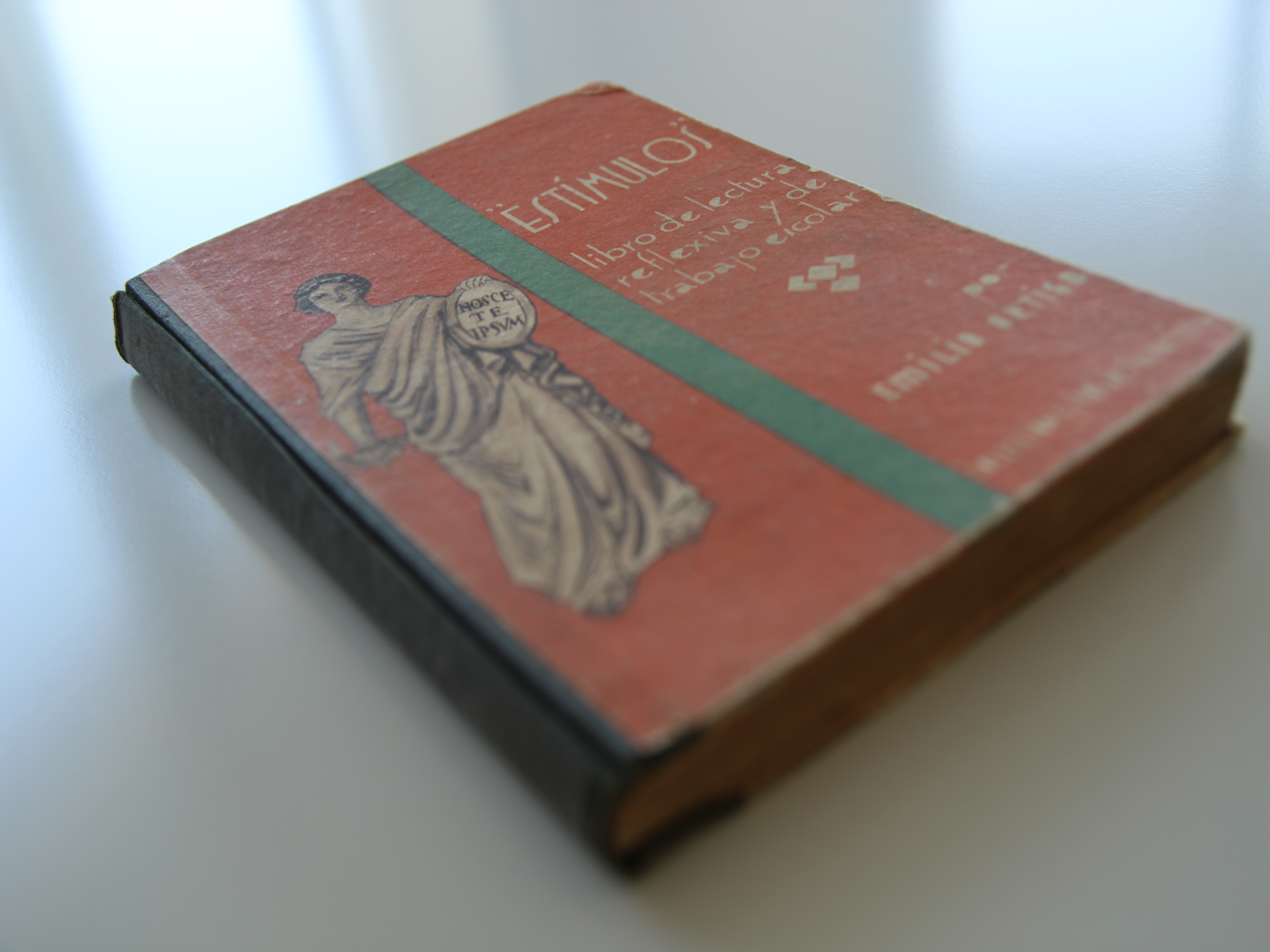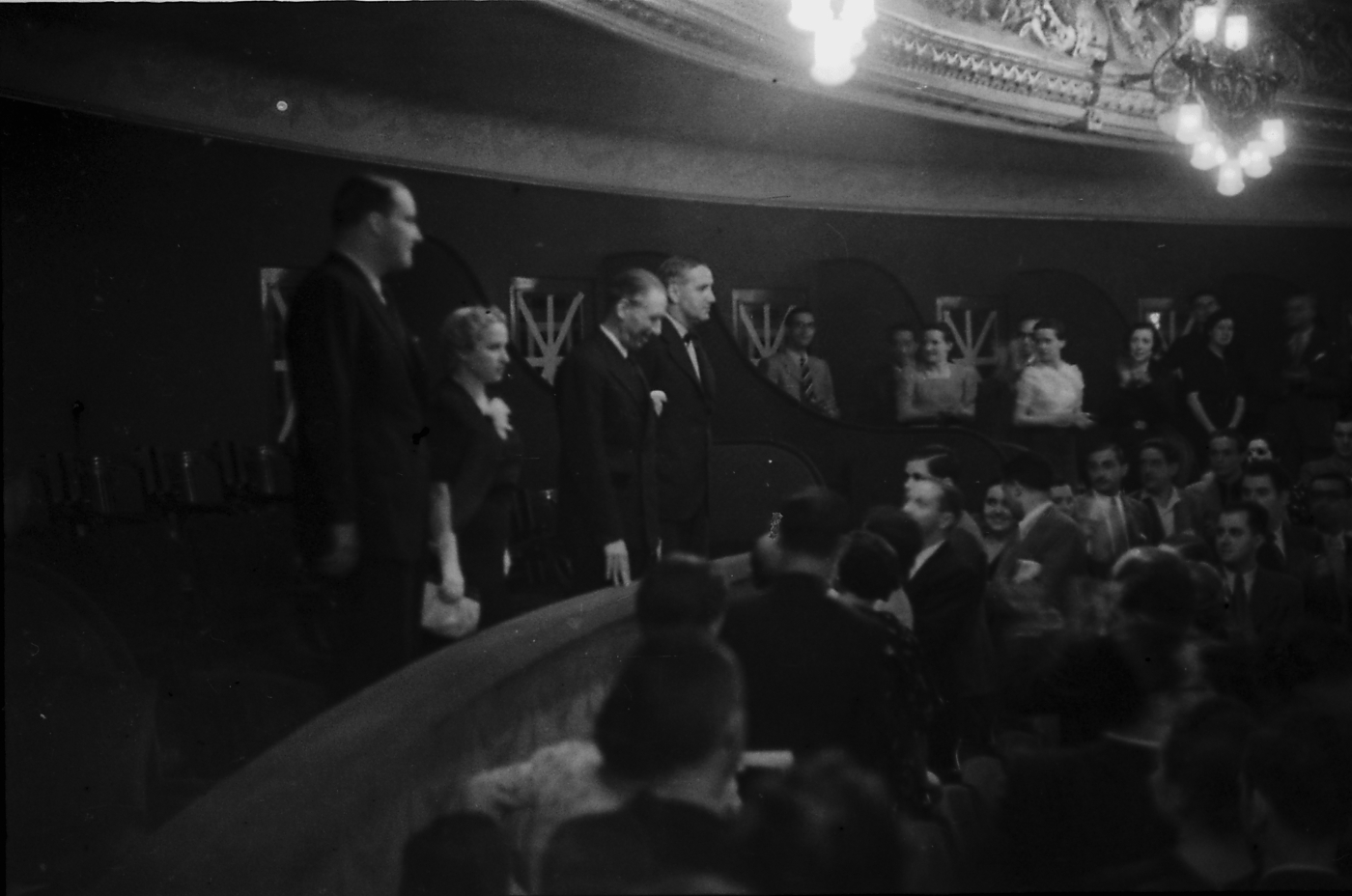Permanent exhibition
The permanent exhibition is the core of Espai Lluís Companys, dedicated to the figure, work and period around Lluís Companys. There is neither a lineal nor chronologic itinerary proposed, otherwise it is aimed to be free and thematic. Through its itinerary, an outline of his figure can be drawn from his origins in his hometown, El Tarròs, to his execution. Moreover, in this exhibition his ideological and political thinking can be discovered.
The exhibition includes photography playbacks, posters, addresses and speeches that, on many occasions, they can only be found in the archives. An audiovisual support closes the showing.
New levels of interpretation are allowed by the interactive museography, which widens the contents of all the fields.
A room with dim light and ambient sound immerses the visitor in an experience where time is held in suspense.
Recently a new exhibition space has been incorporated and it is dedicated to Avenida bridge in Irun where Companys, who was exiled in France, was handed to Francoist authorities on 1940.
Lluís Companys
Lluís Companys was born in El Tarròs (nowadays it is part of the municipality of Tornabous) in 1882 within a family of wealthy peasants. His rural origins will trace his political pace, for instance, with his agricultural policy.
He settled in Barcelona soon, where he studied at Liceo Políglota and befriended Francesc Layret. He had a very active participation in the writing press as he started to publish articles at a very young age. Companys graduated from Law Studies and his political career gained importance. He was part of different political parties and occupied different charges, being his charge as president of Esquerra Republicana de Catalunya (ERC) one of the most important among others.
He was councillor at Barcelona’s council, MP at the Spanish Court, prefect, first President in democracy of the Catalan Parliament, Minister of the Navy, President of the Catalan Government...
On 6th October 1934, Companys proclaimed “the Catalan State within the Spanish Federal Republic”, reason for which he was condemned and imprisoned. After the victory of the Popular Front (Front Popular in Catalan), in 1936, he was pardoned and was in charge of the presidency of the Catalan Government again. But the Spanish Civil War was about to start...
After the Francoist victory, in February 1939, he exiled in France. But, in August 1940, Companys was arrested and deported to Spain. On October 15th, after a summary execution by a military court, he was executed at Montjuïc castle in Barcelona. In this way, he would become the first President of the Catalan Government elected in a democracy who would be executed in the Spanish State.
Those are just some brief notes of an “eventful life” that developed through an intense historical context. Gather us in this course through a key period for the contemporary history of Catalonia. We are waiting for you!
He settled in Barcelona soon, where he studied at Liceo Políglota and befriended Francesc Layret. He had a very active participation in the writing press as he started to publish articles at a very young age. Companys graduated from Law Studies and his political career gained importance. He was part of different political parties and occupied different charges, being his charge as president of Esquerra Republicana de Catalunya (ERC) one of the most important among others.
He was councillor at Barcelona’s council, MP at the Spanish Court, prefect, first President in democracy of the Catalan Parliament, Minister of the Navy, President of the Catalan Government...
On 6th October 1934, Companys proclaimed “the Catalan State within the Spanish Federal Republic”, reason for which he was condemned and imprisoned. After the victory of the Popular Front (Front Popular in Catalan), in 1936, he was pardoned and was in charge of the presidency of the Catalan Government again. But the Spanish Civil War was about to start...
After the Francoist victory, in February 1939, he exiled in France. But, in August 1940, Companys was arrested and deported to Spain. On October 15th, after a summary execution by a military court, he was executed at Montjuïc castle in Barcelona. In this way, he would become the first President of the Catalan Government elected in a democracy who would be executed in the Spanish State.
Those are just some brief notes of an “eventful life” that developed through an intense historical context. Gather us in this course through a key period for the contemporary history of Catalonia. We are waiting for you!
Highlights
Click on the images to see the videos (only available in catalan)
Click on the images to see the videos (only available in catalan)




